OddCameras.com
Voigtländer Brillant S (and how to acces the mirror)
The Voigtländer Brillant S is a Twin Lens Reflex
6x6 camera, made by Voigtländer, Braunschweig, Germany.
Voigtländer is probably the oldest optical company in the world. It was founded in 1797 in
Vienna, Austria, by Johann Christoph Voigtländer. When in 1839 the
invention of photography was published, Voigtländer furnished the
optics and from 1840 on they made entire cameras. The Voigtländer
optics were the first mathematically calculated, developed by professor
Josef Maximilian Petzval with the help of Peter
Voigtländer. Peter Voigtländer set up a sales office in Braunschweig
which was in those days the central hub in the German rail network. It
offered an easy access to the German overseas ports.
In 1845 Peter Voigtländer married the daughter of a Braunschweig
lawyer. The Vienna business was closed in 1868. Voigtländer
Braunschweig became a stock company (AG in German), Voigtländer &
Sohn AG in 1898. In 1923 a majority of the shares were bought by
Schering AG which had a photo division and which launched large-scale
production in 1925.
There are a lot of stories about Voigtländer and Franke & Heidecke,
the creators of the Rolleiflex about who made what first. Both are
based in Braunschweig. Tracing it down it seems as if Voigländer made
stereo cameras first, the Stereophotoskop from 1904 - 1926 with a non
focussing reflex finder and the Stereoflektoskop from 1914 - 1937 with
a focussing reflex finder. This camera was copied by Franke & Heidecke in 1921 as Heidoskop. Obviously Franke & Heidecke developed their Rolleiflex from this Voigtländer camera. So claiming the first is very difficult to decide. BTW: both,
Franke and Heideke had worked for many years for Voigtländer, the
former as a sales manager, the latter as an engineer.
The Brillant series was launched in 1932. The first models had a metal
body and were simple box cameras with a big brillant reflex finder on top,
hence the name. So the camera resembled to a TLR, but the finder didn't
focus. In 1937 they changed the material of the body to bakelite,
sometimes called V6. And finally, in 1938, a second line was launched,
the Focussung Brillant S. This is a real TLR. The viewing and
taking lens are coupled outside the body through a gearing. The cheaper
non-focussing version was nevertheless continued. Production ended in
1951.
There is a close Russian copy of the Brillant, the 1946 Komsomolets, later called Lubitel. There were millions of these made.
The camera presented is a Focussung Brillant S. It has some advanced features for its time.
Lenses:
Taking
lens: Voigtar 1:4.5 f=75mm, there was 1:3.5 Skopar version (see photos
at the bottom of the page) and even a rare Heliar version which I have
never seen yet.
Viewing lens: Rapid S-O 1:2.2 f=75mm,
Shutter: Compur, B, T, 1 to 1/300s, diaphragms 4.5 to 22.
Dimensions: 75 (85) x 126 x 92 mm
Weight: 716 gr.
Some pictures:
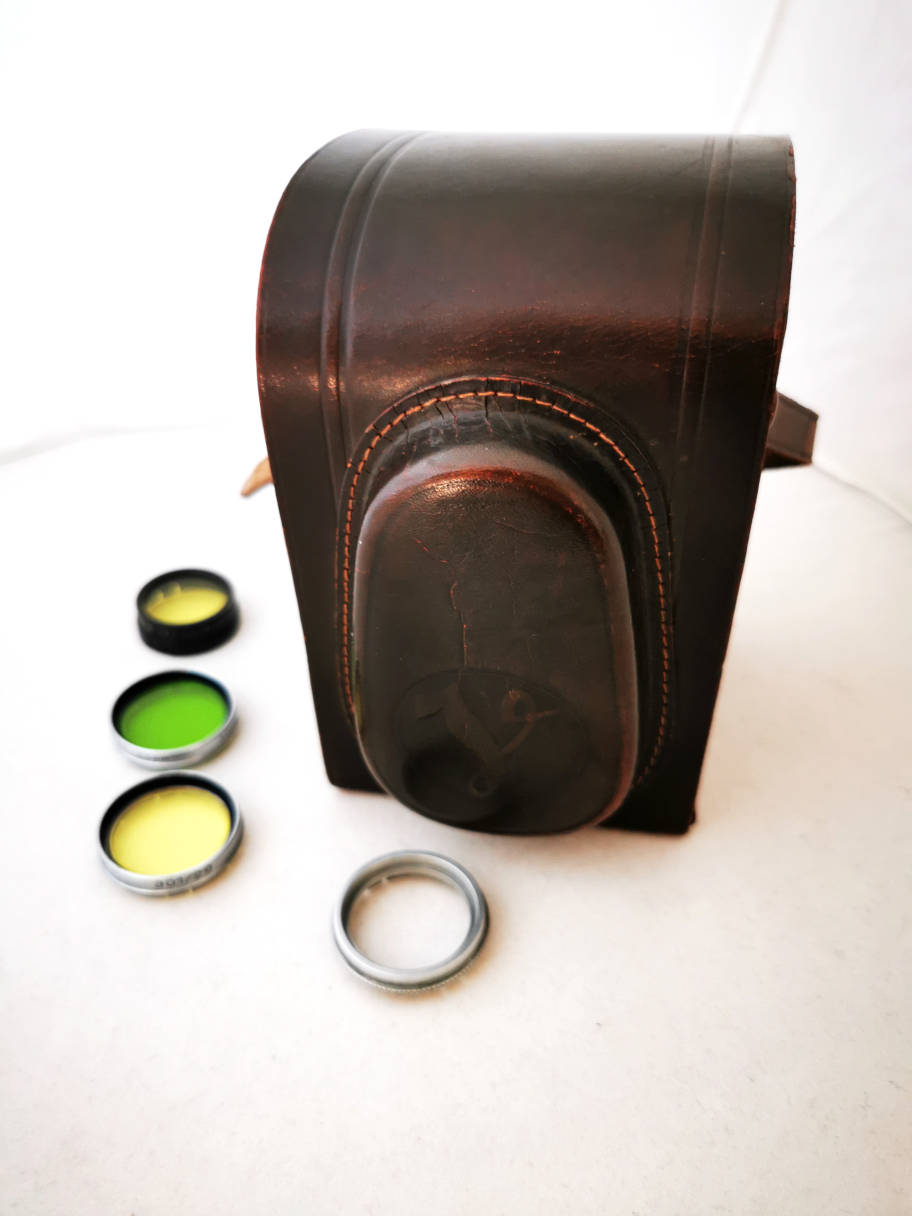
Camera in leather case and some extra filters.
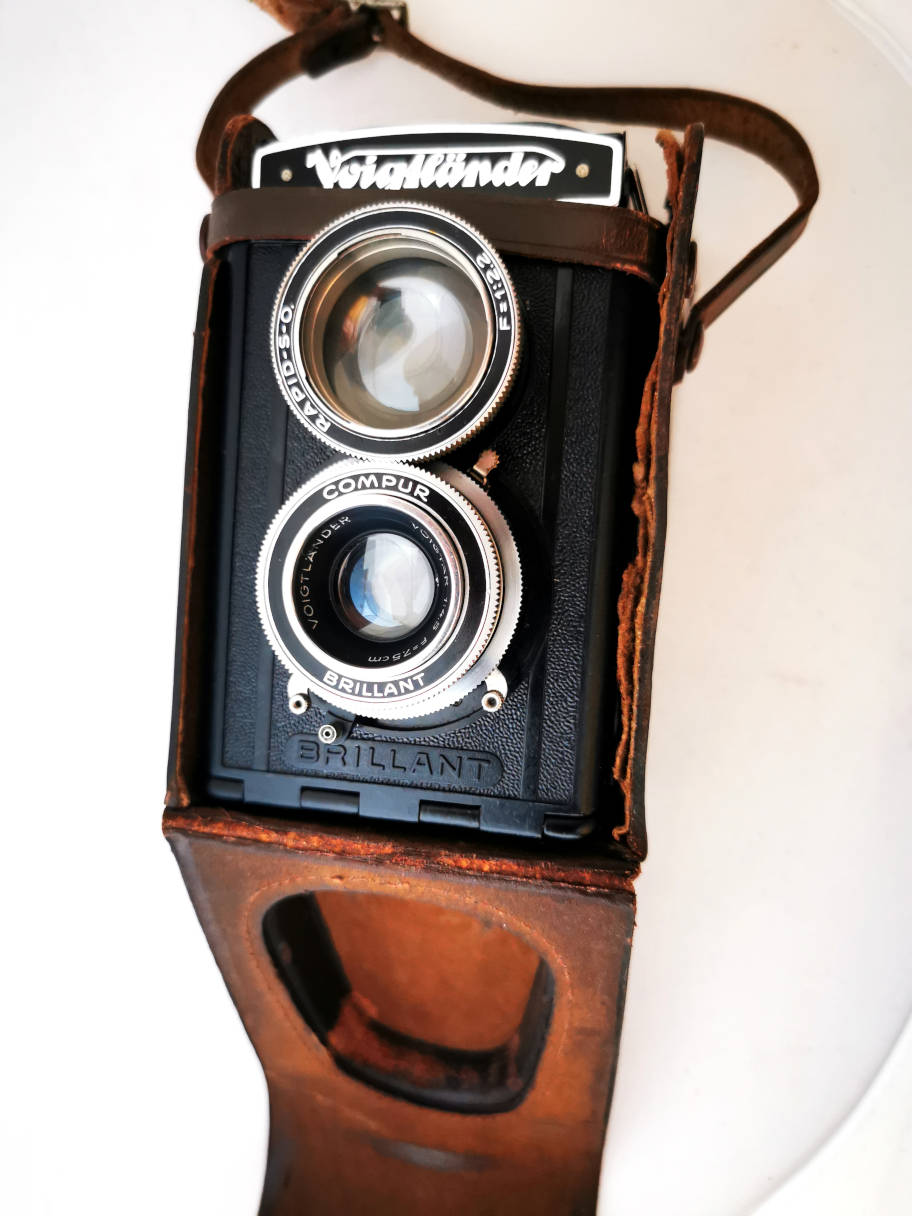
Camera
front. Camera in ready-case.
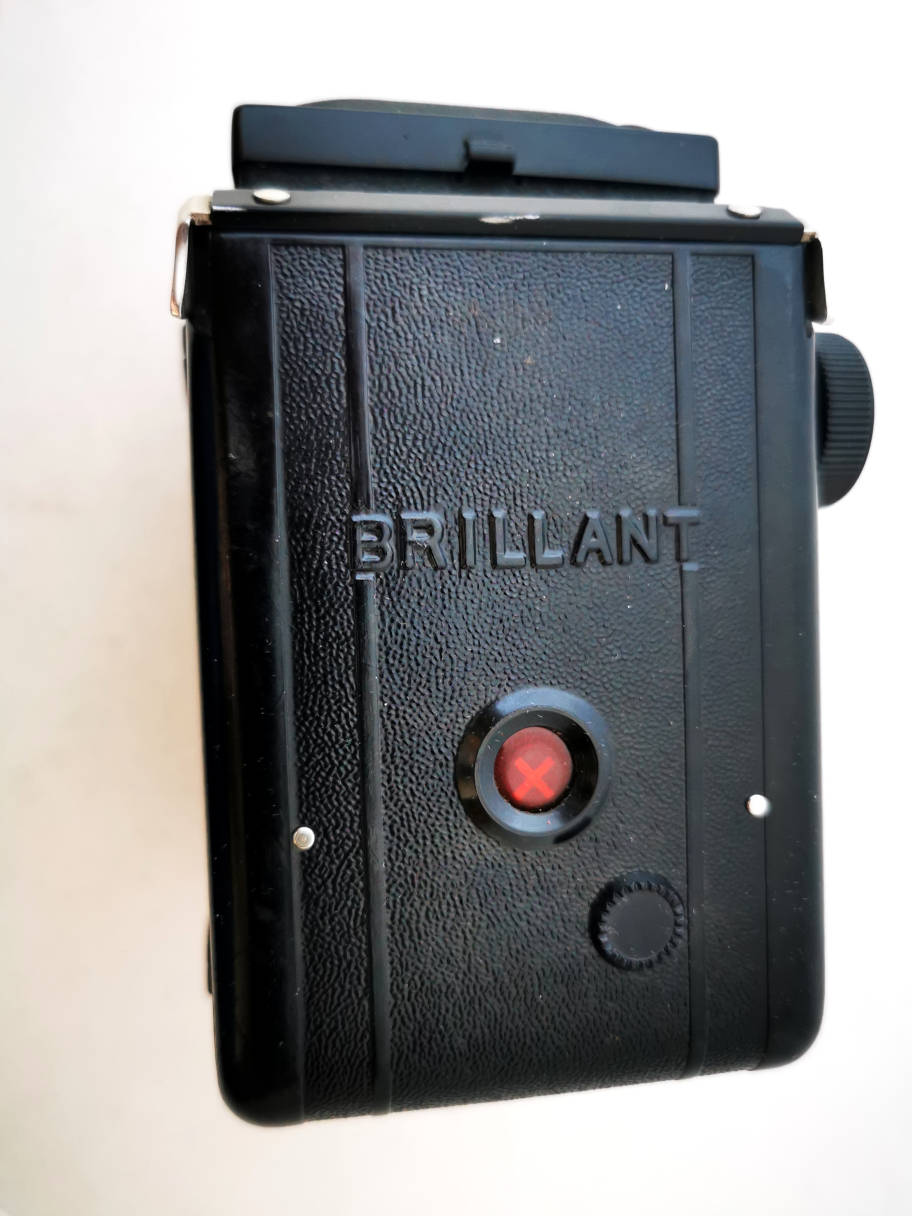
Camera
back. Red window for first photo, then it's automatic. The silver tabs
on the top of the flap have to be squeezed to open the back.
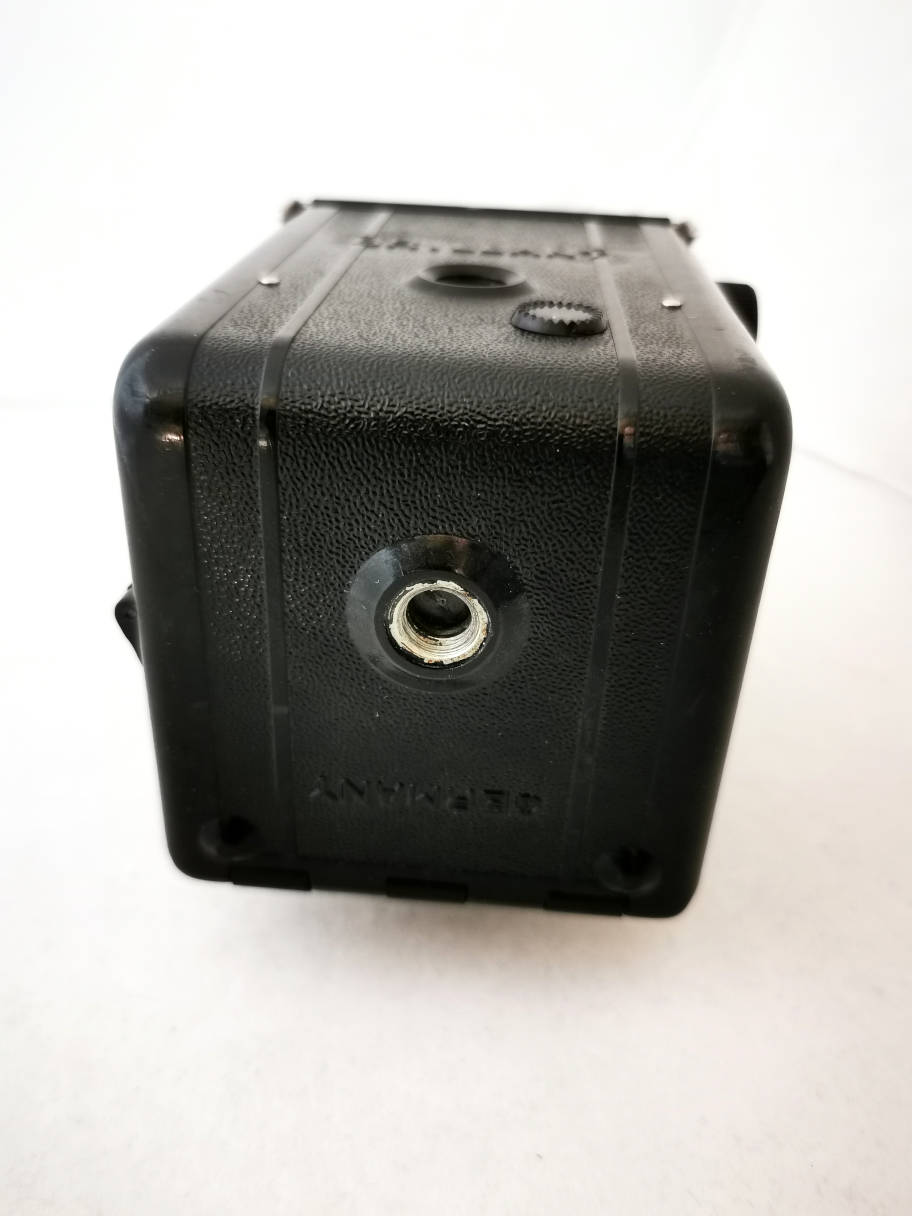
Camera bottom. Tripod mount.
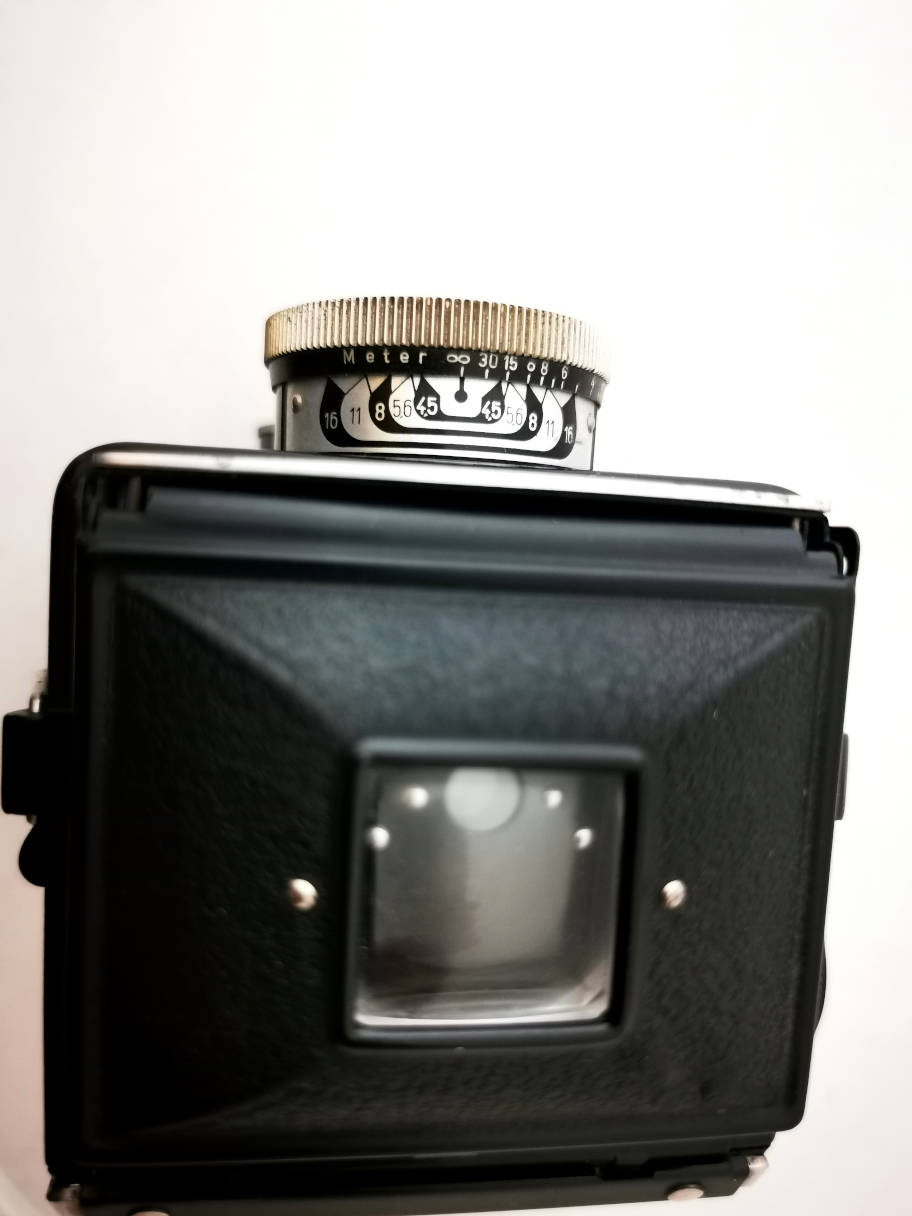
Seen
from above. DoF scale on the lens barrel.
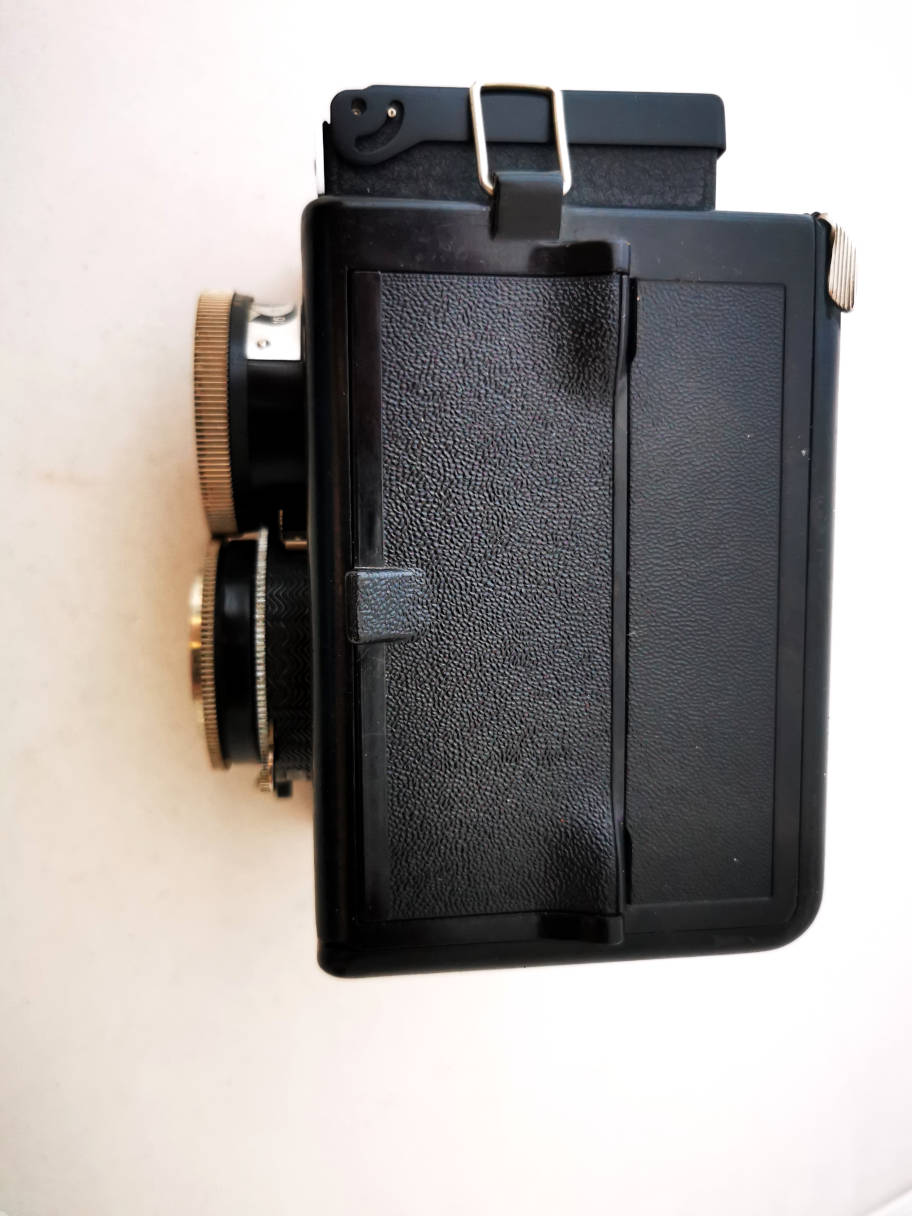
Camera right side.
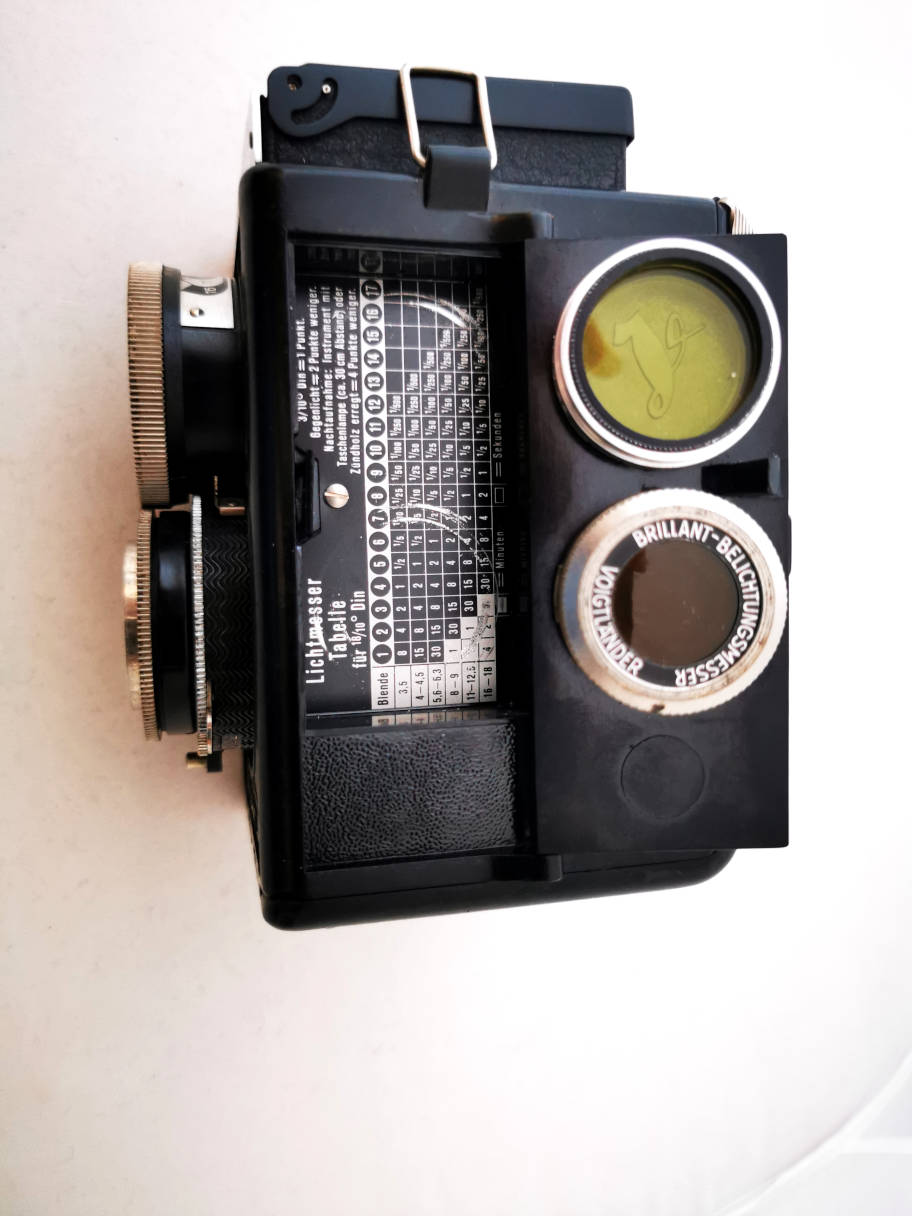
Right side, filter compartment open. The camera was delivered with a
yellow filter and an exposure meter, to be mounted before the viewing
lens. The exposure meter is a special one:
It's a high-quality but little-known sub-type of optical exposure
meters, it has a comparison light source. In principle, such devices
would be superior to most others because they can objectively measure
the illumination of bright and dark parts of the subject. However,
widespread use failed due to the availability of reliable comparison
light sources. This method was used by Voigtländer in the light meter
supplied with some Brillant cameras.
Before the actual measurement, this light meter has to be pre-exposed
to light from the inside and outside for about 30 seconds so that a
luminescent mass would be available as a reference light source for the
subsequent measurement. The meter is designed like a filter and is
attached to the TLR viewfinder lens. The evaluation is done on the
ground glass - in a way a precursor of the later TTL exposure metering.
When not in use, it is stored in the side compartment, there is a
calculation table at the bottom of it.
It is calculated for a film speed for 18° DIN (ISO 50). For other films
speeds one point on the table must be subtracted or added for every 3°
DIN (or each doubling or halving of the ISO numbers). For back light
subtract 2 points. It is able to measure exposure times from 4 min to
1/500 sec.
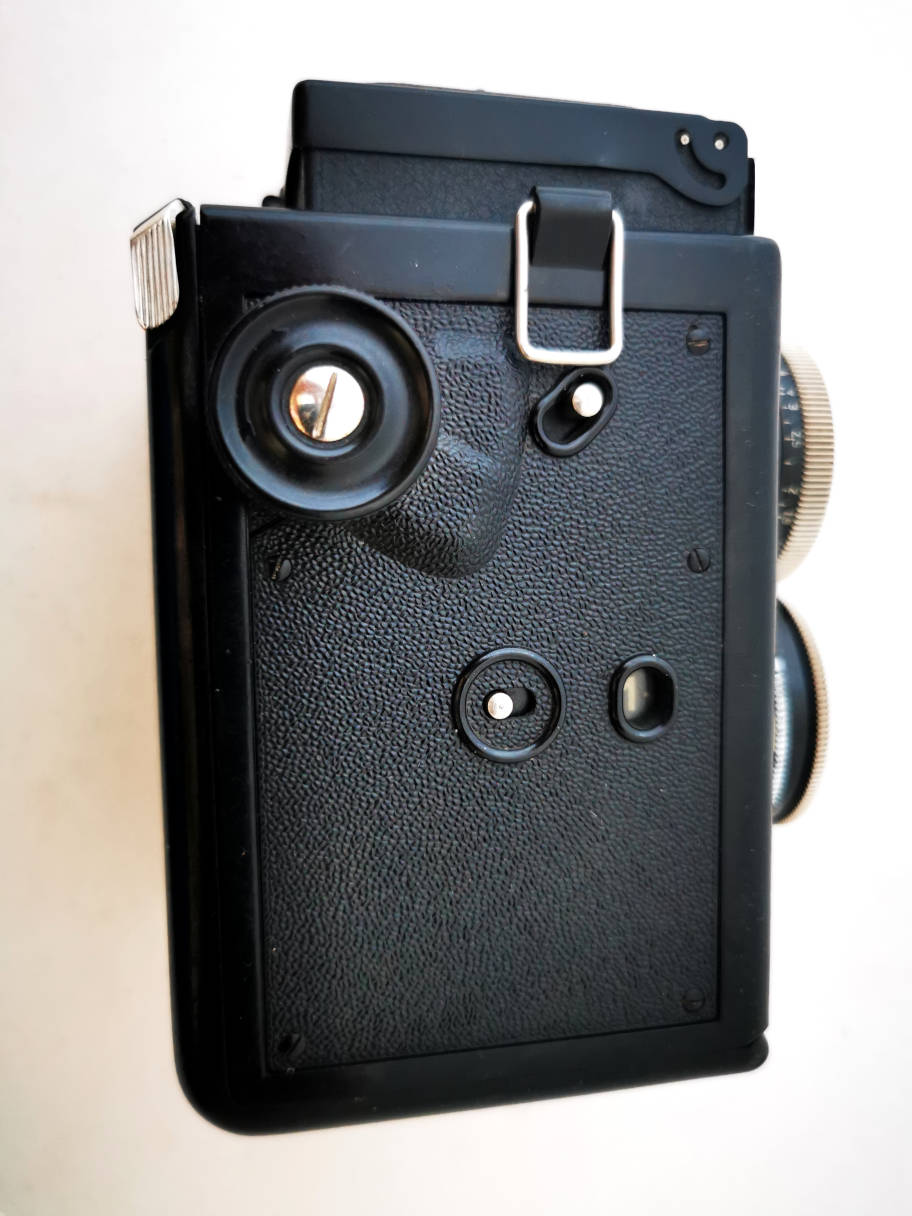
Camera
left side. Wind knob and wind unlock, film counter and counter reset.
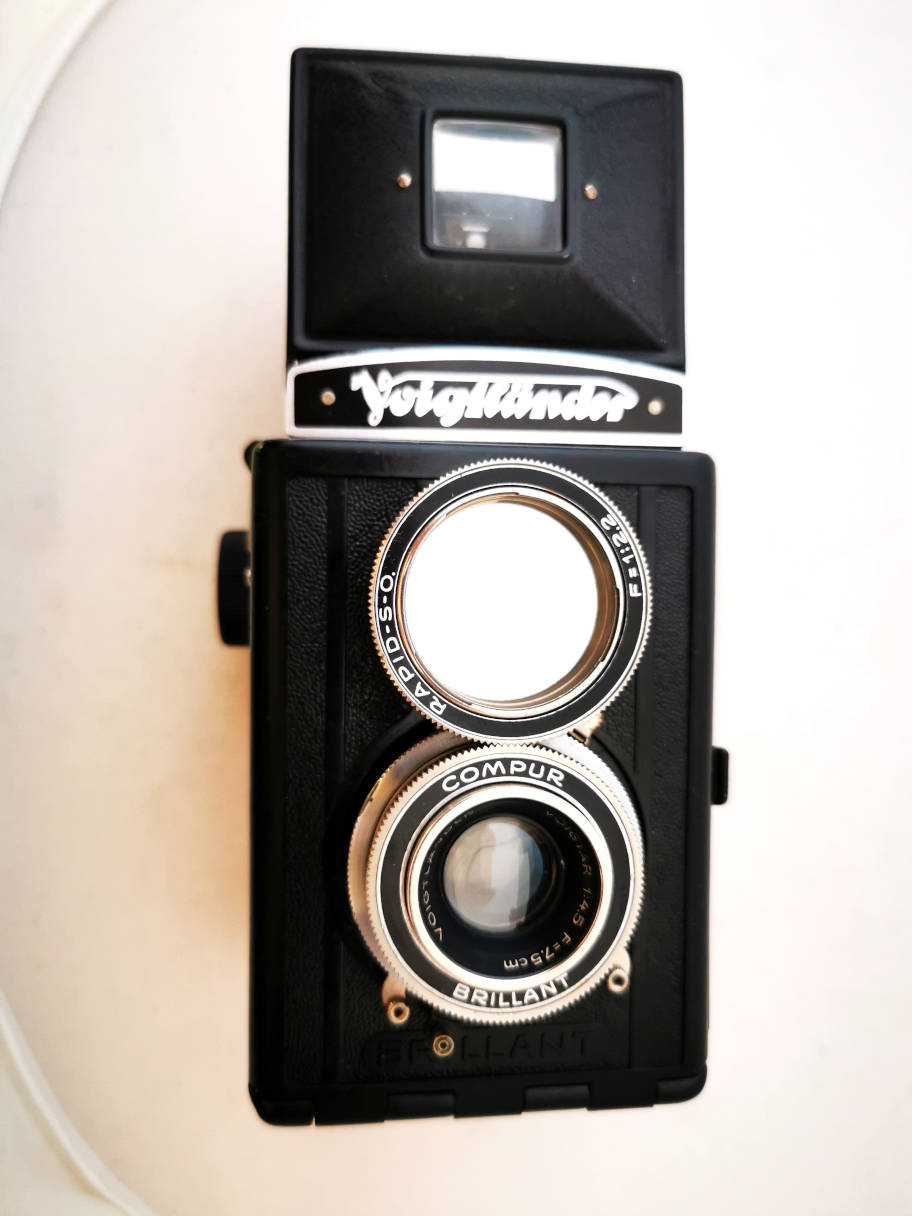
Camera open. Under the lens: shutter cocking, flash socket and shutter release.
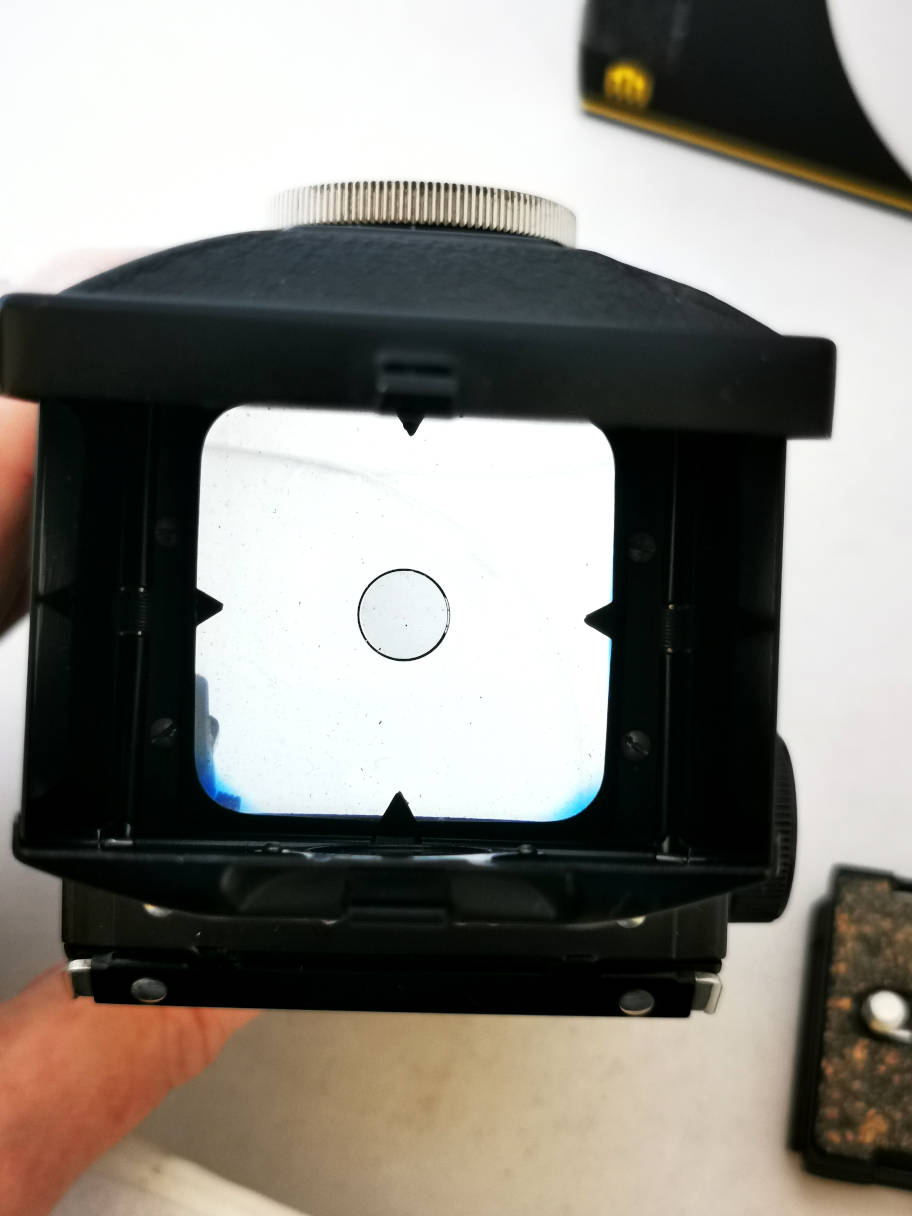
Luminous screen.
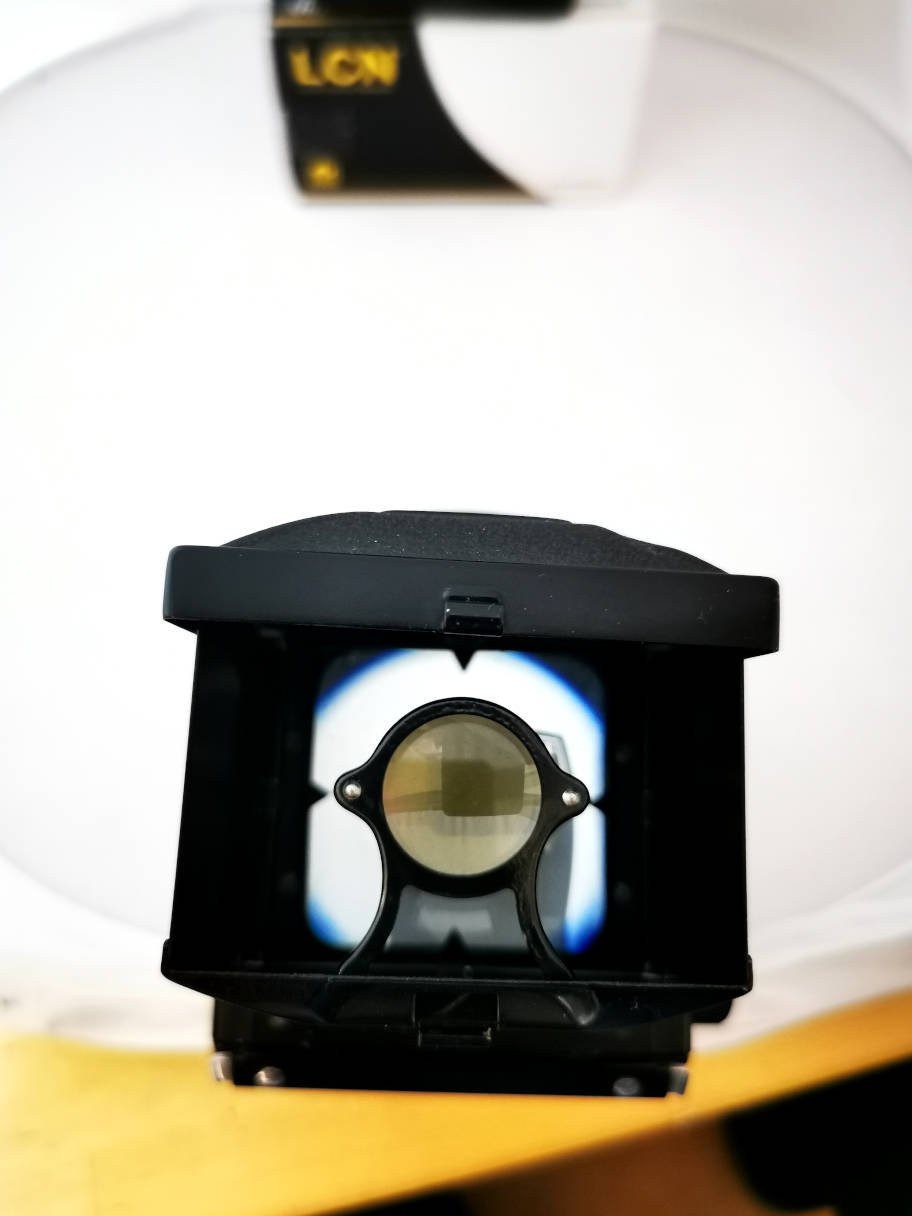
A loupe is provided.
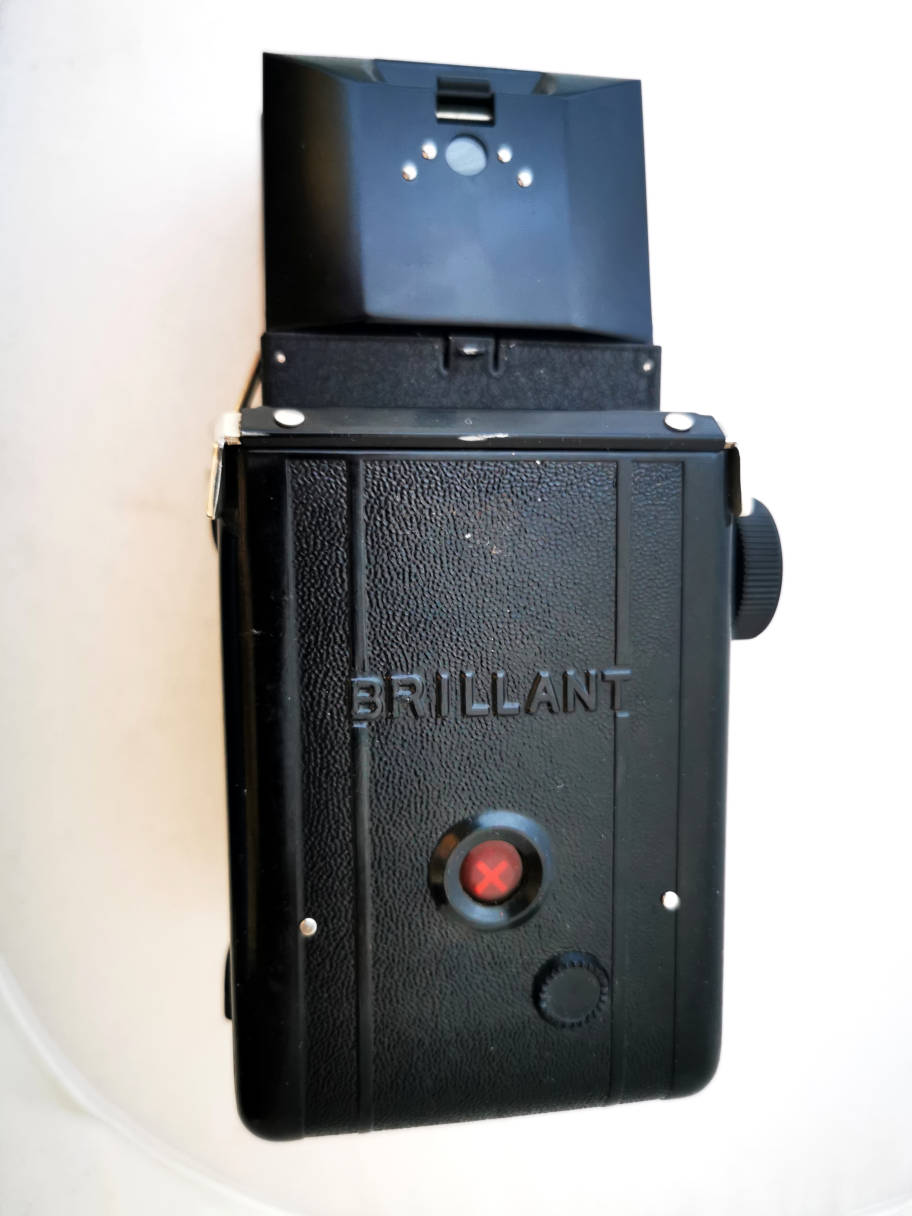
Even the sports finder is a viewing system with 2 lenses.
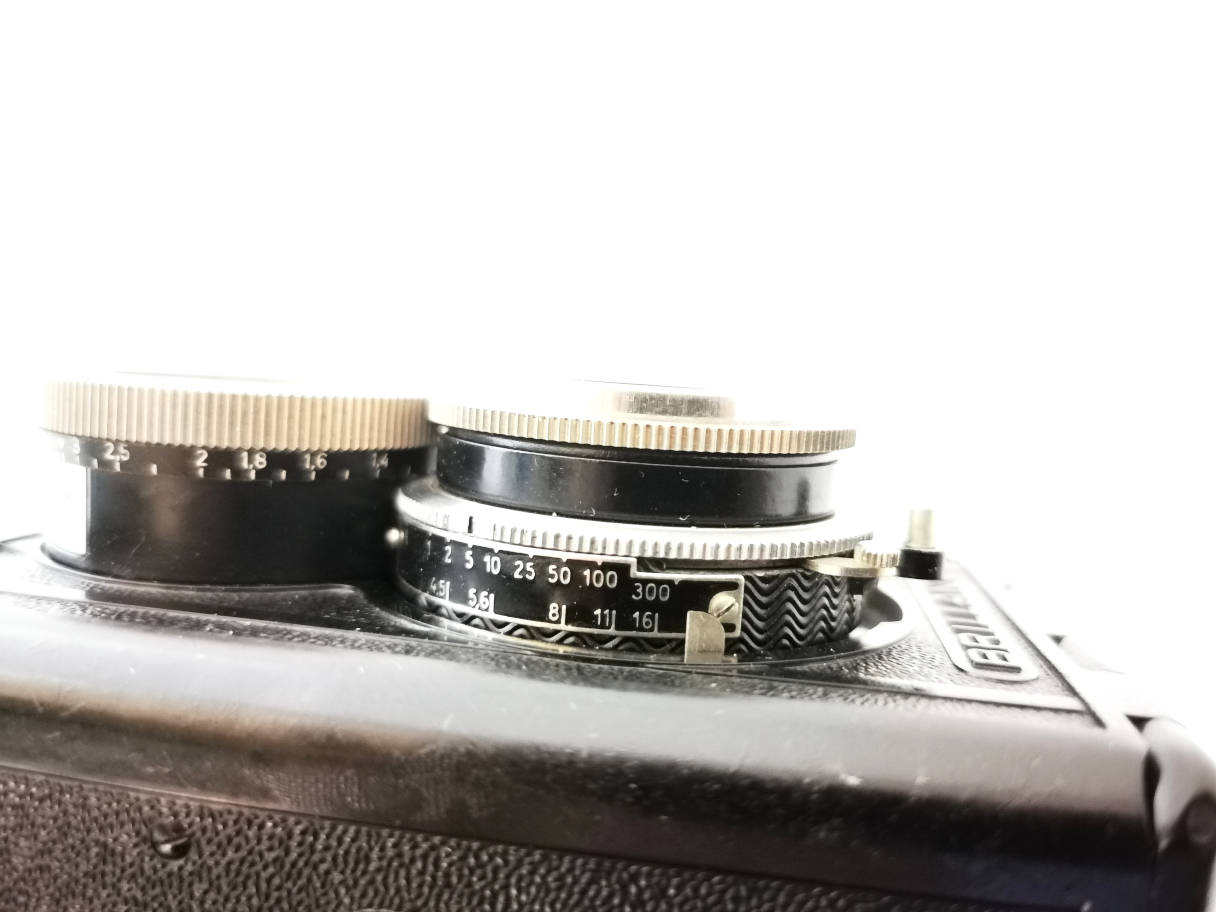
There is a good choice of speeds.
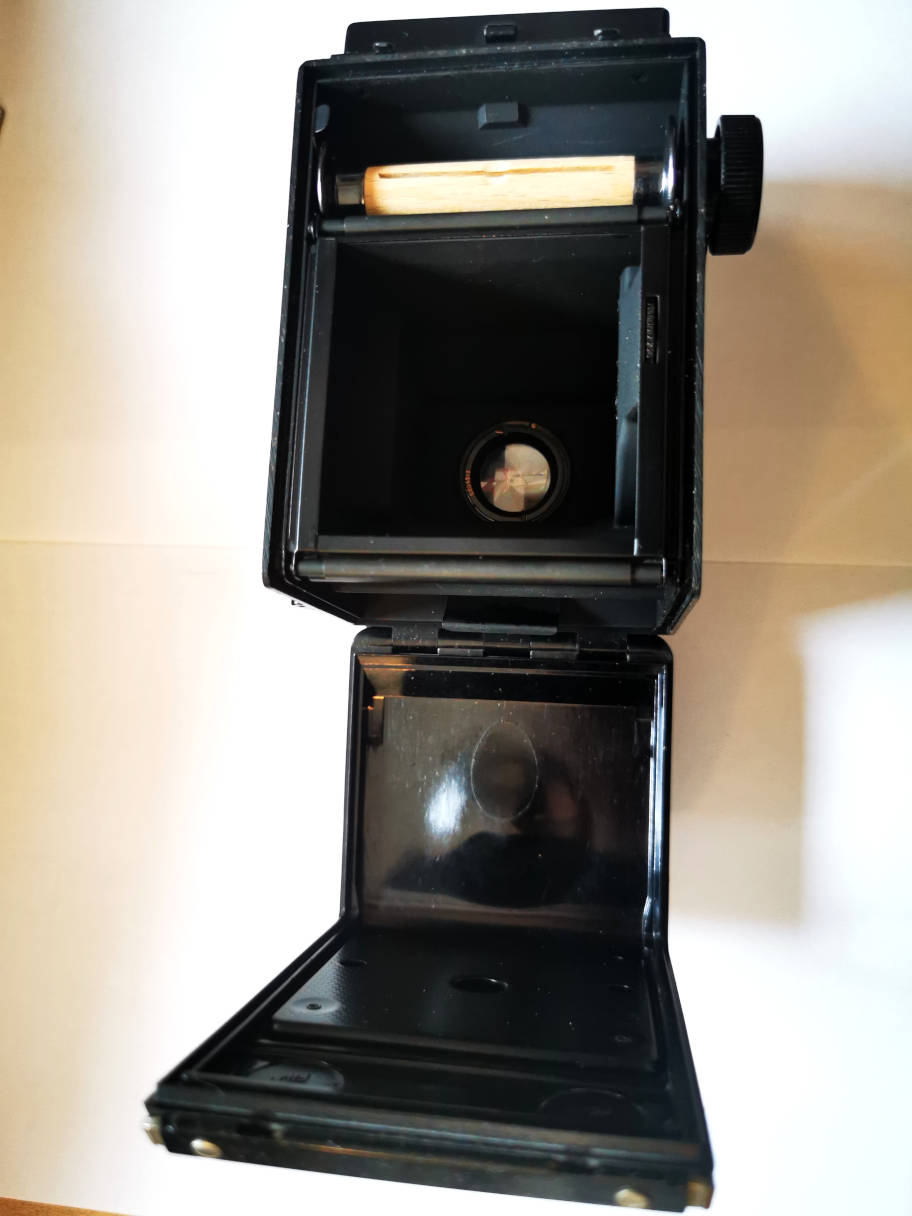
Camera back open.
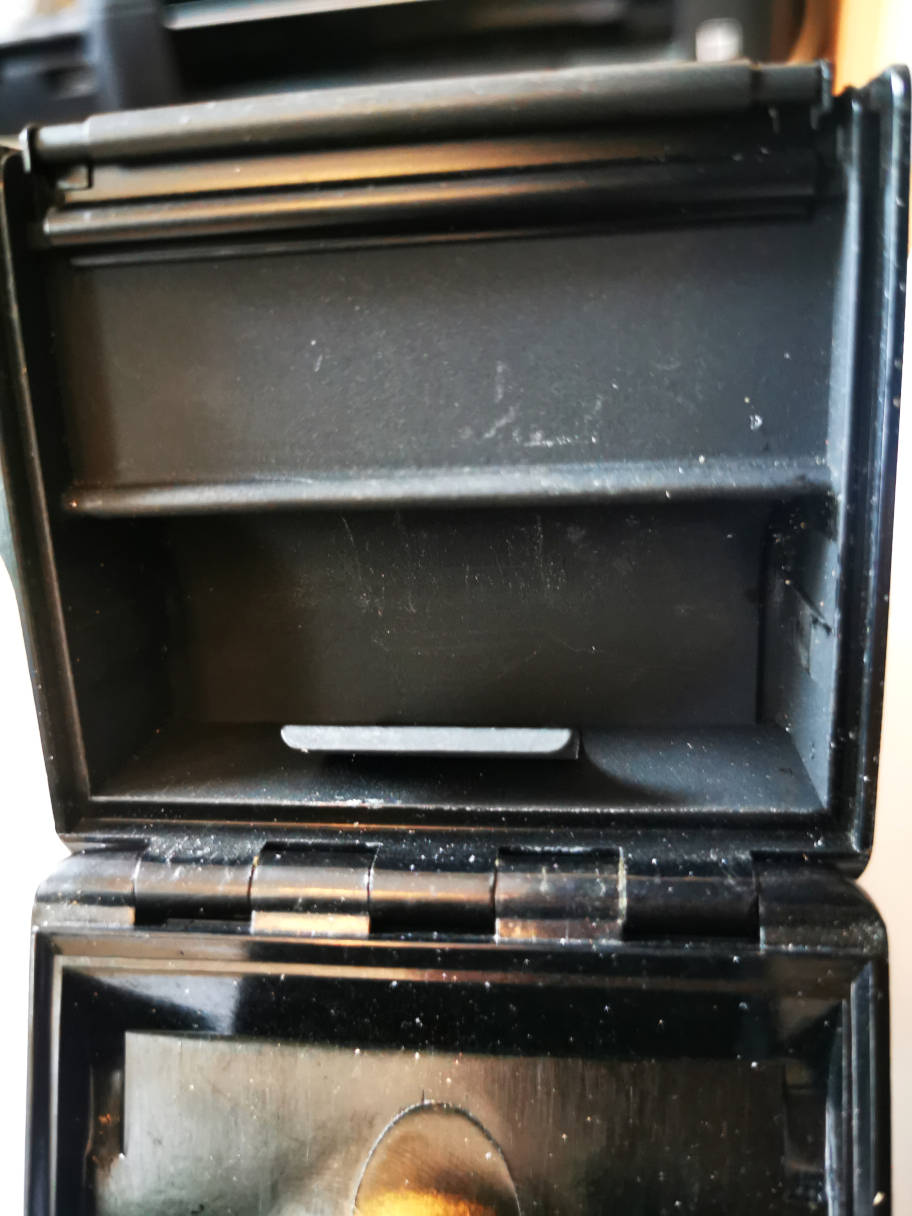
Film spool chamber.
The
Voigtländer Brillant S is a very nice, light and small 6x6 TLR camera.
Handling is easy and logic. To put a film, squeeze the silver tabs at
the end of the back flap and open the back. Put the winding spool into
its place, the winding knob retracts and can be disengaged by a quater
turn. Drop the film spool into its place at the bottom, there are no
pegs. Engage the film leader into the winding spool and make one or 2
turns. Close the back and open the red window. Wind until no. 1 is
visible, you may have to push the wind release to do so. Close the red
window, reset the counter. Ready for the first shot. Set time and
aperture. Focus on the ground glass by turning the lens. Take your
photo. Action the wind release and wind. When all of the 12 pictures are taken, wind on for several
turns, take out the spool.
Picture quality is superb. This camera is much better than its clone,
the Lubitel. Only the Lubitel Olympic has automatic film advance, but
the Lubitel advance system is unreliable and very few were made. So
take the original, the Voigtländer Brillant S.
On all old TLR cameras the mirror of the finder might have issues. I made a page about how to access the mirror.
As promised, the Skopar version:
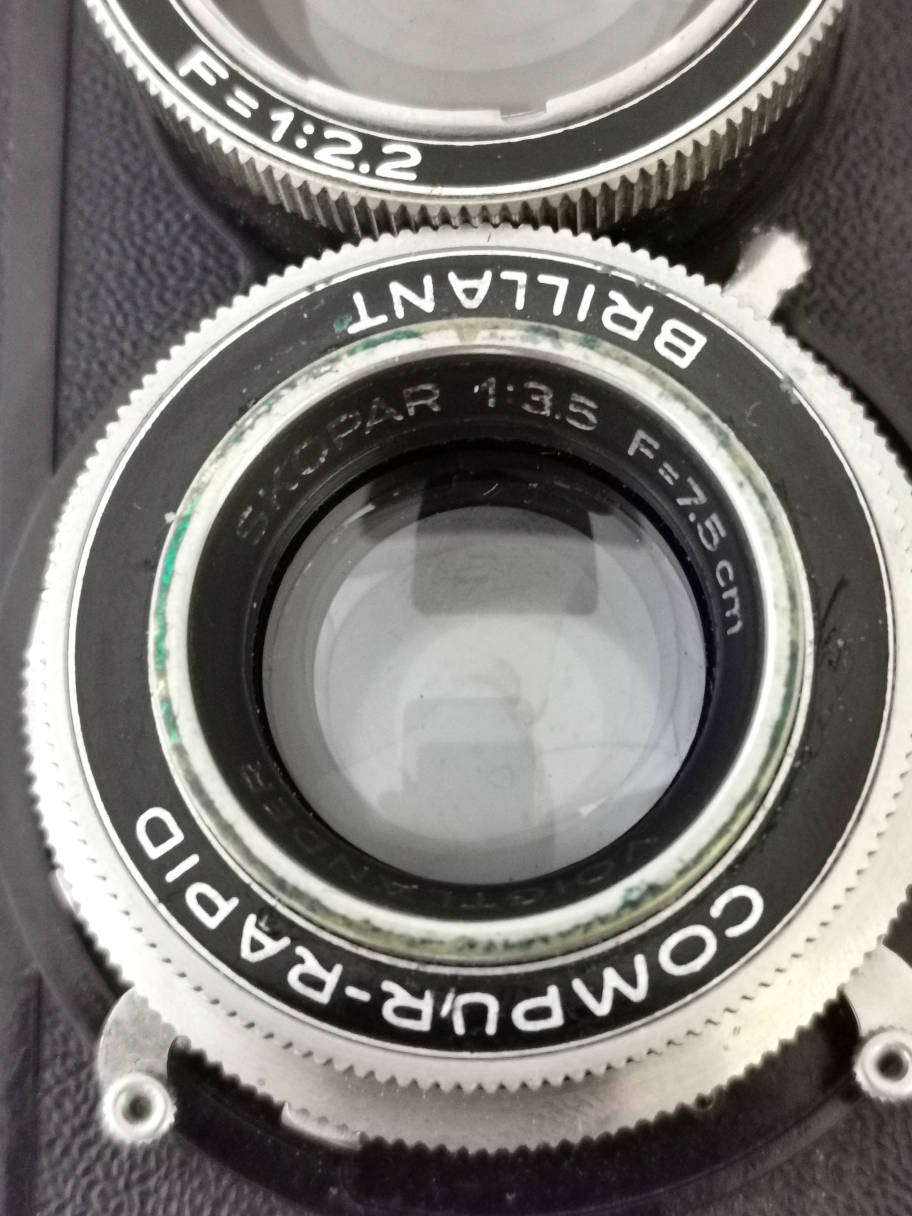
The lens opens up to F 3.5
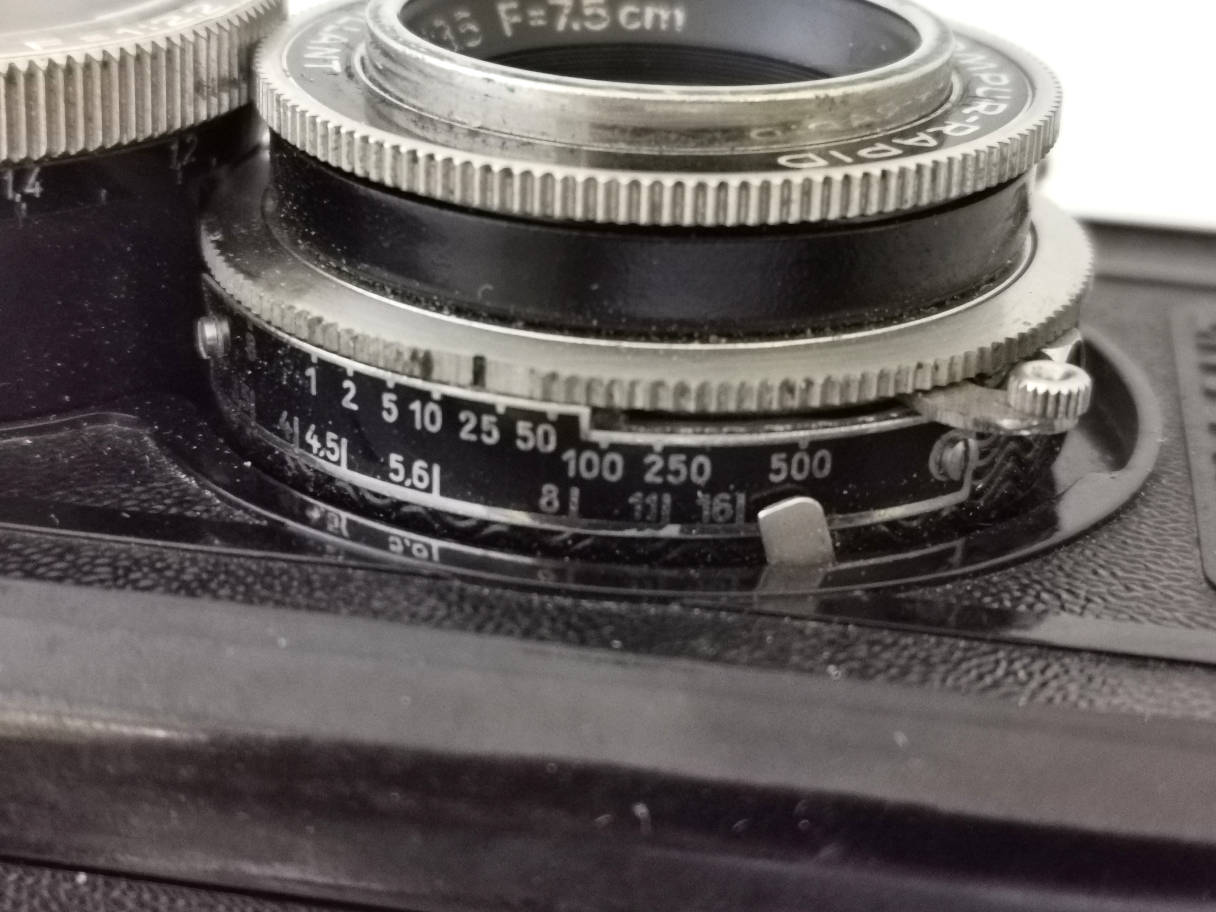
As th lens is more luminous, the shutter has 1/250 and 1/500s shutter times on a Compur Rapid shutter.
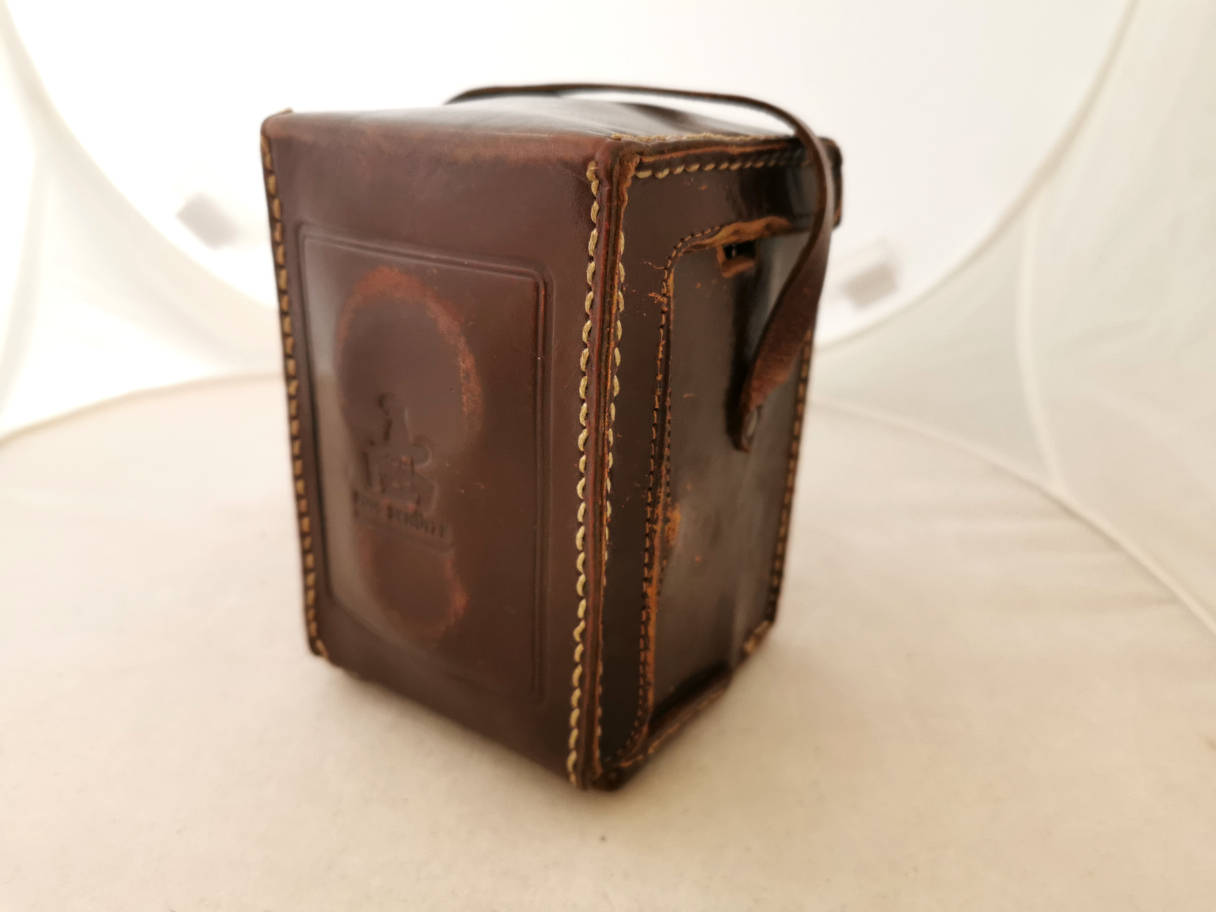
The camera came in a different leather case...
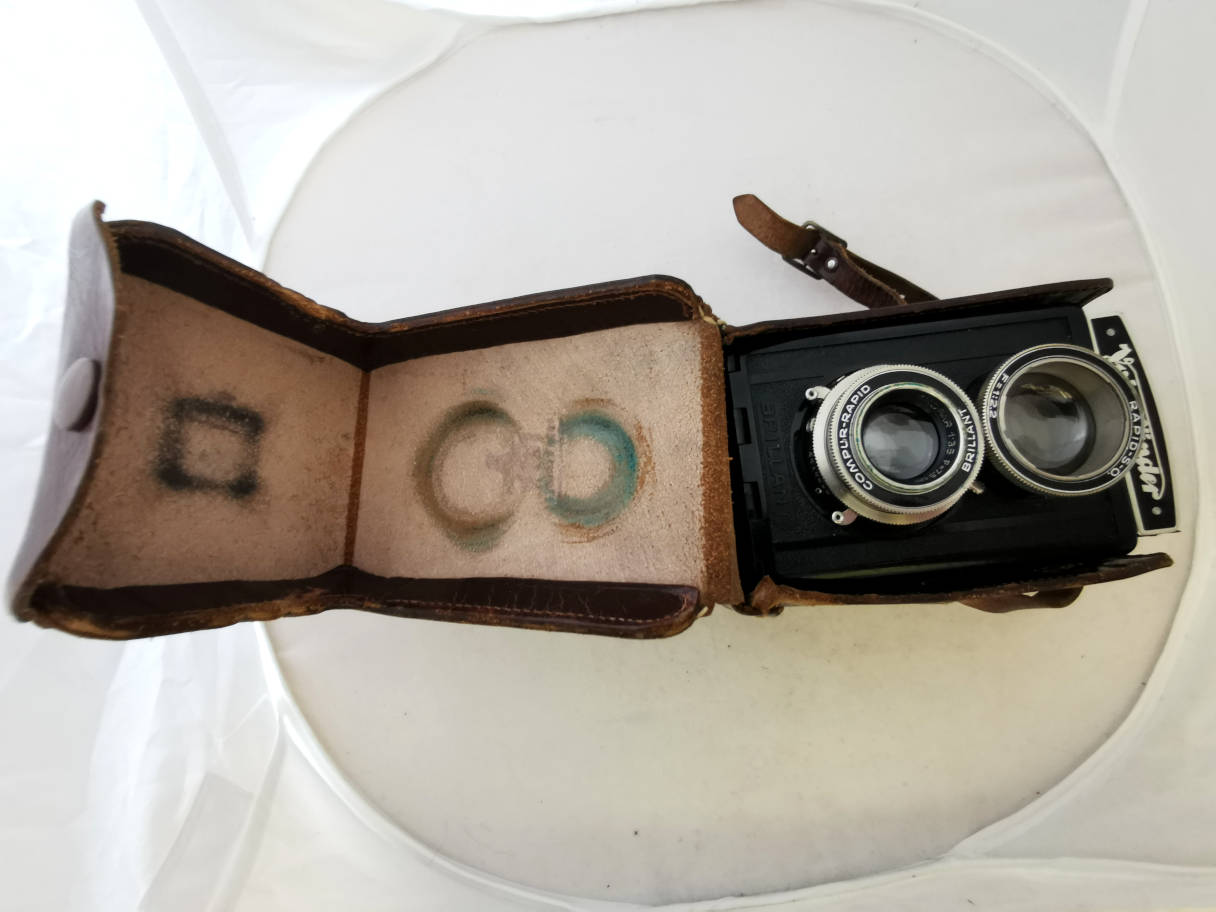
...which works as a ever-ready case.


















